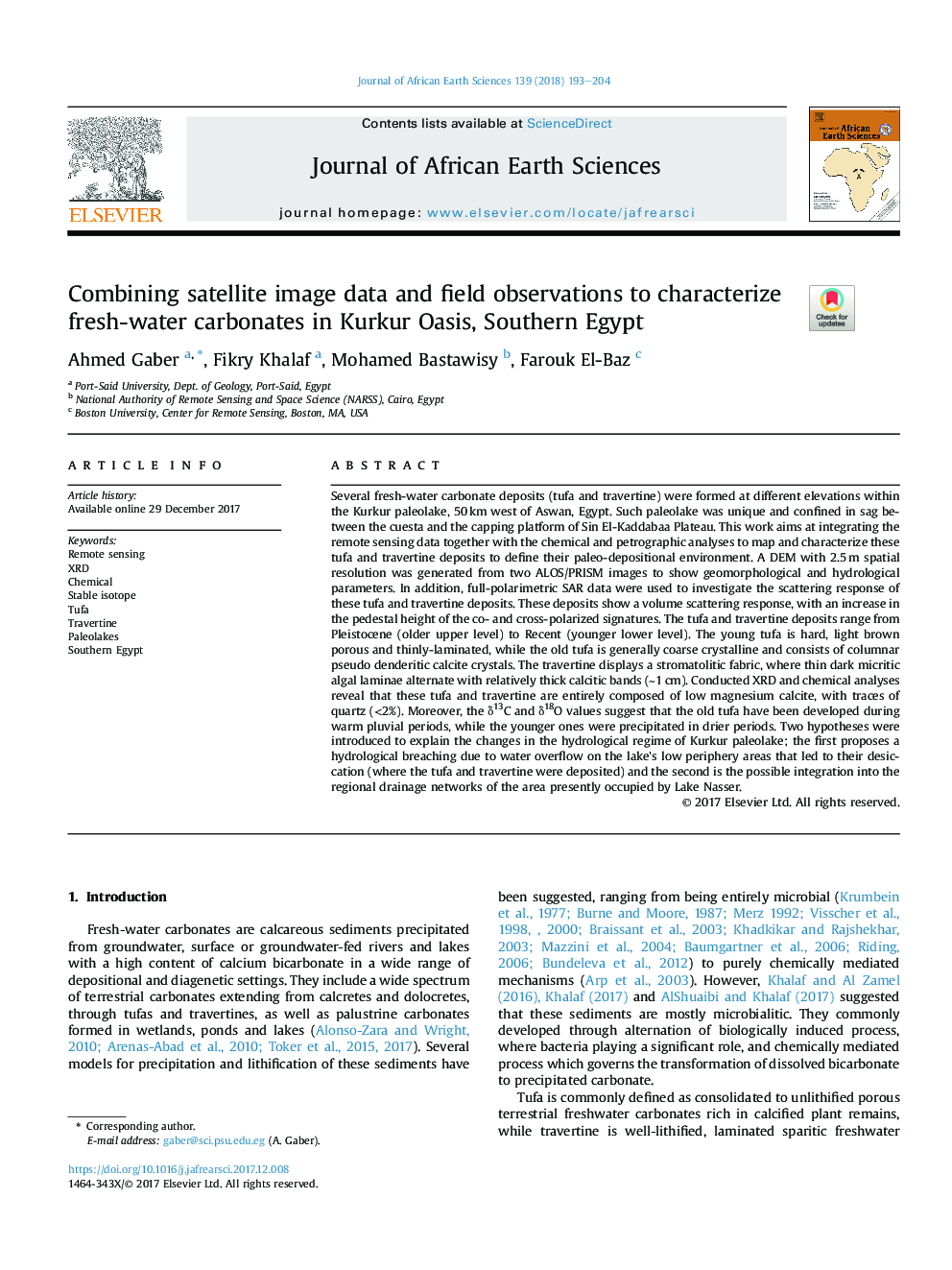| Article ID | Journal | Published Year | Pages | File Type |
|---|---|---|---|---|
| 8913596 | Journal of African Earth Sciences | 2018 | 12 Pages |
Abstract
Several fresh-water carbonate deposits (tufa and travertine) were formed at different elevations within the Kurkur paleolake, 50â¯km west of Aswan, Egypt. Such paleolake was unique and confined in sag between the cuesta and the capping platform of Sin El-Kaddabaa Plateau. This work aims at integrating the remote sensing data together with the chemical and petrographic analyses to map and characterize these tufa and travertine deposits to define their paleo-depositional environment. A DEM with 2.5â¯m spatial resolution was generated from two ALOS/PRISM images to show geomorphological and hydrological parameters. In addition, full-polarimetric SAR data were used to investigate the scattering response of these tufa and travertine deposits. These deposits show a volume scattering response, with an increase in the pedestal height of the co- and cross-polarized signatures. The tufa and travertine deposits range from Pleistocene (older upper level) to Recent (younger lower level). The young tufa is hard, light brown porous and thinly-laminated, while the old tufa is generally coarse crystalline and consists of columnar pseudo denderitic calcite crystals. The travertine displays a stromatolitic fabric, where thin dark micritic algal laminae alternate with relatively thick calcitic bands (â¼1â¯cm). Conducted XRD and chemical analyses reveal that these tufa and travertine are entirely composed of low magnesium calcite, with traces of quartz (<2%). Moreover, the δ13C and δ18O values suggest that the old tufa have been developed during warm pluvial periods, while the younger ones were precipitated in drier periods. Two hypotheses were introduced to explain the changes in the hydrological regime of Kurkur paleolake; the first proposes a hydrological breaching due to water overflow on the lake's low periphery areas that led to their desiccation (where the tufa and travertine were deposited) and the second is the possible integration into the regional drainage networks of the area presently occupied by Lake Nasser.
Related Topics
Physical Sciences and Engineering
Earth and Planetary Sciences
Geology
Authors
Ahmed Gaber, Fikry Khalaf, Mohamed Bastawisy, Farouk El-Baz,
